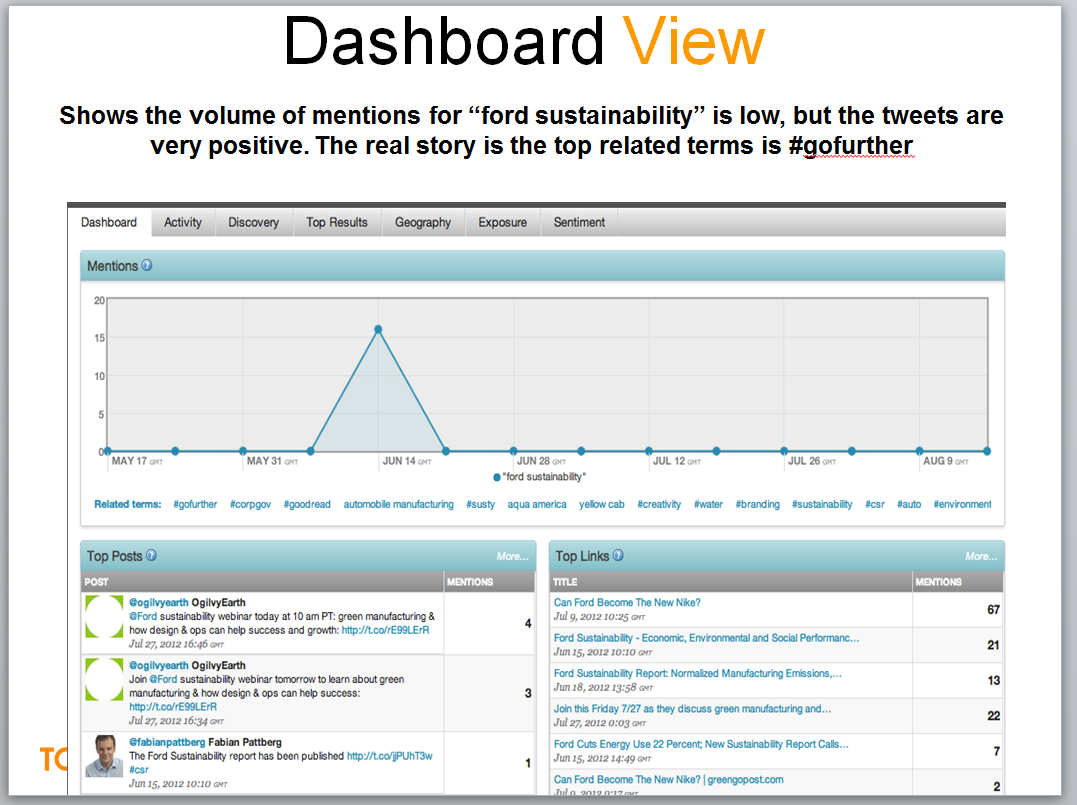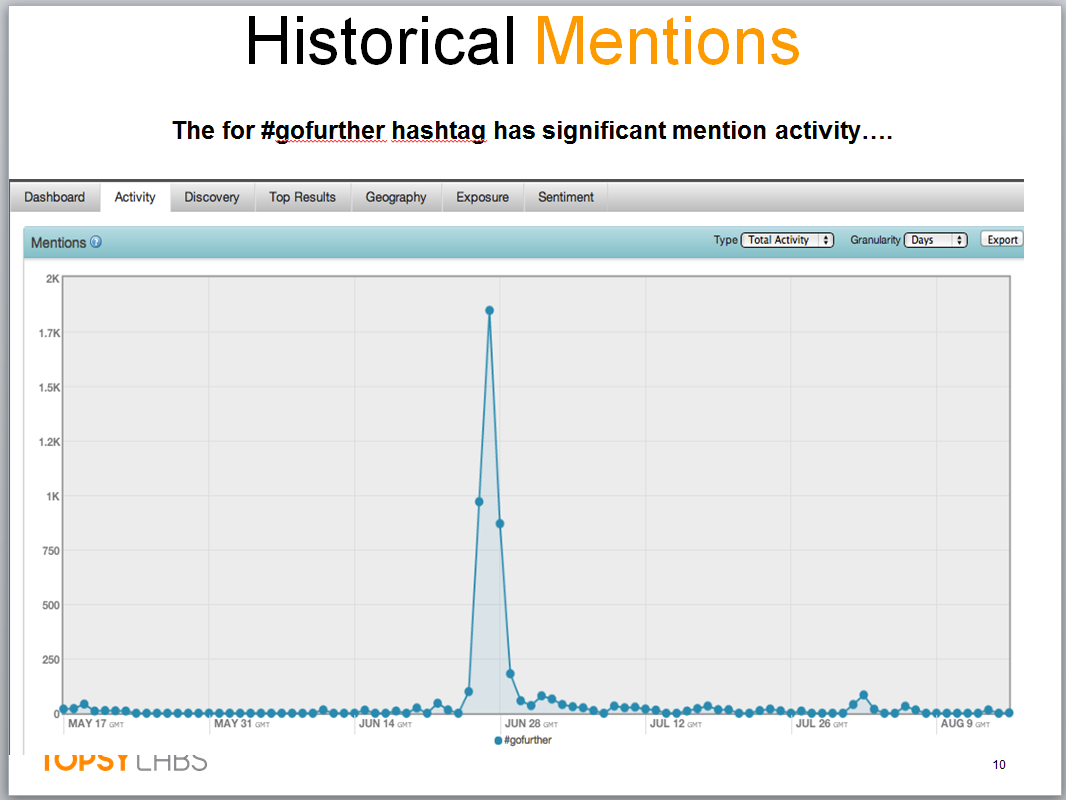Social Media Marketing: Data mining Twitter for trends, sentiment and influencers
Data collection and analysis is a topic near and dear to most digital marketers’ hearts. Social media interaction is another topic that fits the same bill. What happens when you combine data mining with links shared on a social platform? Measurable and actionable insight that can inform your marketing planning and tactics.
Rishab Aiyer Ghosh, co-founder and Chief Scientist of Topsy Labs, took the time to explain to MarketingSherpa how marketers can mine Twitter for links, hashtags and topics to learn more about influencers, trending subjects and how your brand is perceived.
Data collection and mining is Topsy’s core business, and Rishab shares the types of data that marketers should be tracking on Twitter and what marketers can, and should, be doing with this social media information.
Eddie Smith, Chief Revenue Officer, Topsy Labs, will speak on this topic at the upcoming MarketingSherpa B2B Summit, August 27-30 in Orlando.
What to track on Twitter
Rishab pointed out a number of data points to monitor on Twitter:
- What’s hot or trending for a term, topic, company or even specific products
- Volume of mentions for the chosen data field
- Track sentiment based on positive and negative mentions
- Measure exposure based on how many people are most likely seeing the mentions
“For all of these metrics, you’d want to see trends over time, and you might want to drill down into short granularities,” Rishab explains. “You might want to look at minute-by-minute data for the past few hours, or hour-by-hour data for the past few weeks, (or) day-by-day data going back a couple of years.”
He continues, “You’d want to be able to drill down to see what is it that is causing spikes.” Here are a few factors that might cause these spikes:
- If a term becomes sharply positive, you want to know what things were said relating to that
- Who are the key influencers
- Which people result in the biggest exposure increase for your terms
- Which people originated a message, propagated it and made it spread and get traction
What to do with data mined from Twitter
The most powerful uses of information gathered from mining Twitter are:
- Improving your content marketing by better understanding customer sentiment
- Learning what is most relevant regarding your products, brand or even entire business area
- Uncovering social media influencers to actually reach out to with messaging
“This drill-down allows you to create content that attracts an audience that’s interested in these terms, and identify the key experts for each term, to get back to those people, to identify people who are interested in your product or content and find ways of reaching out to them,” Rishab says.
He added digging deeply into social media data also allows you to be more interactive with social platforms because it allows you to understand how your social outreach is being perceived, and who is spreading your message.
Finding influencers
Rishab provided an example of how influencers really affect the distribution of a message on Twitter.
Topsy analyzed the Twitter reaction to the bin Laden raid last year. The analysis began with one person tweeting from Pakistan, and looked at the exposure he received over time.
Within the first eight hours of the raid, the Pakistani Twitter user reached around 100,000 exposures. Then, someone in U.S. media — the influencer in this case — found the initial tweets, retweeted them and, less than one day later, the Pakistani Twitter user had reached 90 million exposures.
After the influencer retweeted the message, Twitter users with large numbers of followers would also retweet the message, increasing the amplification of that particular tweet.
This type of analysis has much value:
- Find the origin of a topic’s mention
- Find out who served as an influencer and was able to amplify that message
- See how the exposure increased with each amplification
- Track how fast the message is trending
- Learn the positive and negative sentiment
Once you are able to use this analysis to uncover the influencers, Rishab says you want to be able to reach out to those key experts, as well as to monitor them to find out what they are saying – including whether they are saying good, or bad, things about your brand. You even want to find out to whom they are talking.
“Reach out to them constructively,” Rishab states. “Whether in response to complaints or in response to positive things they’ve said. Or, to simply provide information because you think they are potential messengers for your brand.”
Track hashtags and keywords for relevant messaging
Rishab said keeping track of hashtags and keywords, and the sentiment around both, allows marketers to create content that attracts the audience in which they are interested.
He provided Ford as an example of a company that did just that by creating a campaign based around the general keyword “sustainability.” That keyword carried a lot of positive sentiment, and those positives carried over to the campaign and even created a positive impact for Ford’s brand on Twitter.
In the campaign, Ford used its own hashtag, “#gofurther.”
Here are two Topsy Labs research charts showing the effect of “sustainability” and “#gofurther” on the social media campaign:
The first chart shows high positive sentiment around “Ford sustainability,” and the second illustrates the dramatic spike in mentions of “#gofurther” during the campaign.
If you uncover a hashtag or keyword that is trending and relates to your brand, take advantage of the moment by creating content that will attract the audience interested in the trending topic.
This insight can actually be used to drive entire marketing campaigns, says Rishab.
“What you want is a way to have a universal view of what is going on in social media, and have instant access to what people are saying that relates to your areas of interest,” Rishab states. “And then get actionable intelligence, and get it in a way that is timely, that is accurate, and that allows you to actually change your campaign, act upon it and be responsive.”
Related Resources:
Social Media Marketing: Analytics are free and plentiful, so use them
Measuring Social Media’s Contribution to the Bottom Line: 5 Tactics
Digital Marketing: Understanding customer sentiment
Social Media Measurement: Big data is within reach
Social Sharing: Twitter has highest amplification rate, email has highest conversion rate
Is Social Media Really Living Up to Expectations?
Categories: Social Networking Evangelism Community data collection, data management, data mining, digital marketing, social media marketing, social media measurement












David, I find this post extremely practical with its richness in context and content. You could develop this post into a guide if you wished to.